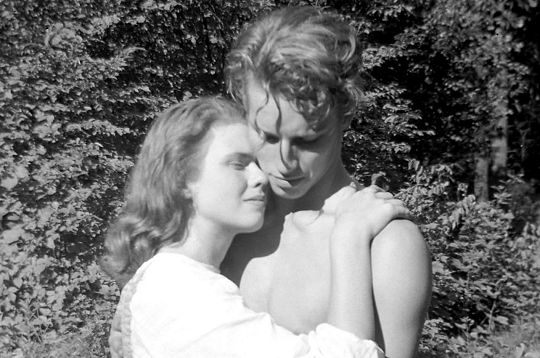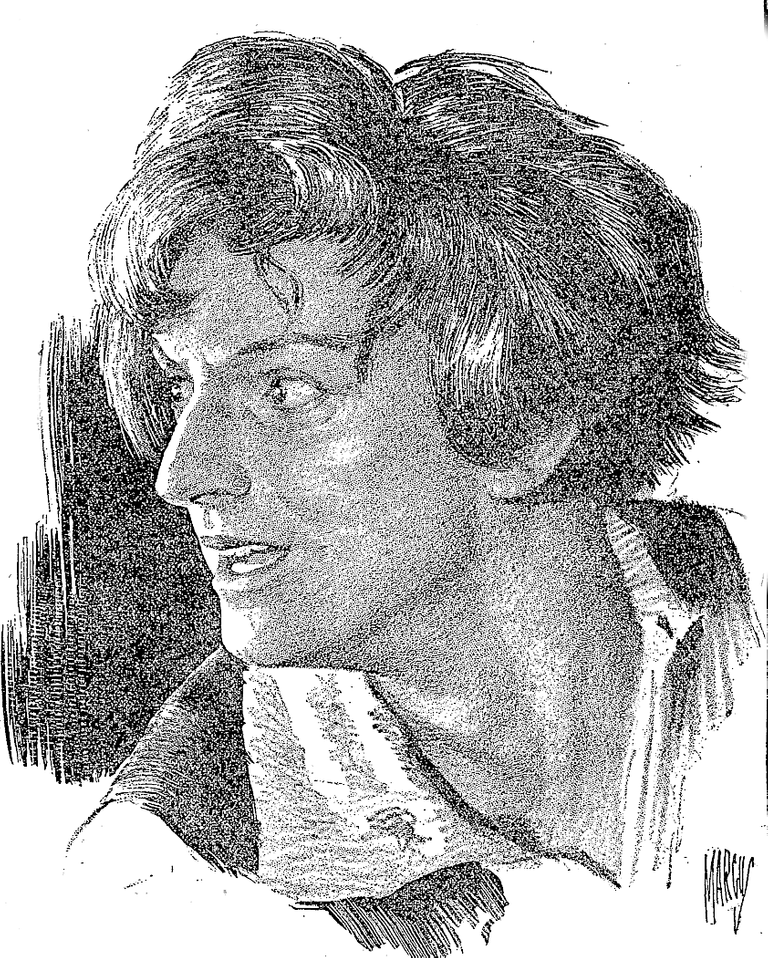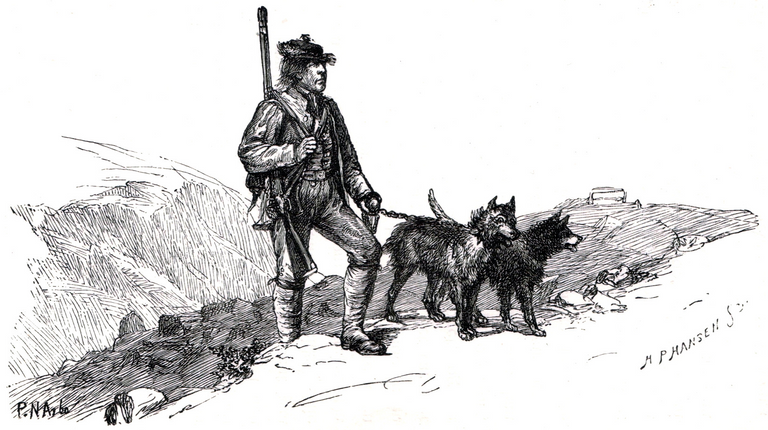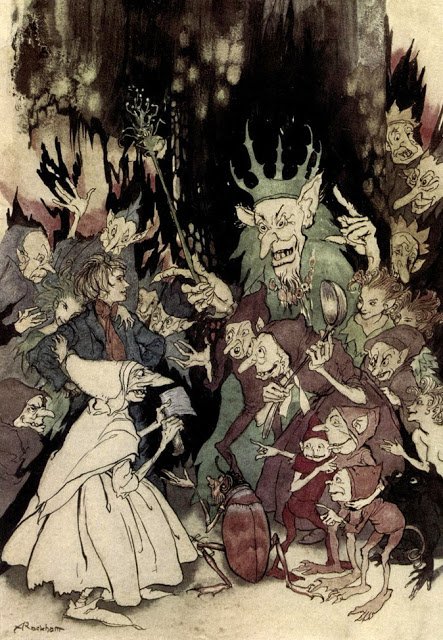Classic Movie Review: Charlton Heston in Peer Gynt, 1941
Charlton Heston as Peer Gynt with Solveig

Credit: Brandon Films. Public domain. Heston is 17 in this scene. The movie was his first. Solveig is portrayed by Katherine Bradley, who may have been related in some way to the Director/Screenplay writer David Bradley
According to the Museum of the Moving Image the silent movie era spanned the years 1894-1931. Yet, Peer Gynt was released in 1941 as a silent movie. This fact alone suggests how audacious the filmmakers and actors were in creating this film.
The movie was voted among the ten best amateur films of 1941 by the Amateur Cinema League. David Bradley, who produced, photographed and directed the film described the rationale behind its development in an article he wrote in 1942.
Bradley explained that the movie was based on the play Peer Gynt, which was written by the Norwegian playwright, Henrik Ibsen. The play itself is so complex that only twice had it been fully staged in the U.S.(according to Bradley).
Joseph Schildkraut, as Peer Gynt, on a Playbill

Credit: Edwin Marcus, NY Times cartoonist. Public domain. The play was staged in 1923 at the Garrick Theatre in New York.
The music score for the play was written by Edvard Grieg. Bradley explained that the opportunity to use Grieg's music for this rarely performed (in the U. S.) play was irresistible to the group of amateurs who came together under his leadership.
Grieg's Peer Gynt, Suite #1 and Suite #2, Performed by the Kristiansand Symphony Orchestra
A look at the credits for the film reveals doubling up of functions by cast and crew. For example, Roy Eggert, Jr worked on both Make-up and Properties. Mr. Eggert also plays roles, Dovre-King and Monsieur Ballon, in the film. Not only was Charlton Heston recruited as a seventeen-year-old to star in the film, but his younger brother Alan played the Ugly Urchin.
It's hard to keep track of the different functions these amateurs filled. Bradley described the process of making the film as 'hard work'. He stated that there were "four faintings" and "sixty cases of Coca-Cola consumed". In all the film took three months to shoot. The format was 16mm.
Peer Gynt, the Play
This play is esteemed in Norwegian culture. It is the "most performed of all Norwegian plays". When Ibsen wrote it he did not intend for the play to be staged. He did not observe traditional playwriting conventions. At some point Ibsen changed his mind about staging the play and asked Grieg to write music for the piece.
The story draws on Norwegian folklore, in particular a character called Per Gynt. Per Gynt appears in fairy tales written by Peter Christen Asbjørnsen. The original Per is boastful. Ibsen's Peer Gynt is a ne'er do well.
Per Gynt, Folk Character

Nicolai Arbo, 1896. Public domain
Ibsen's play is written in five acts. It opens as Peer is at home with his mother, Åse. She is pleading with him to mend his ways. He is meanwhile telling her unbelievable tales about his exploits in the mountains.
He leaves his mother's house to attend a wedding, the wedding of Ingrid, a propertied lass he could have married. At the wedding he happens to meet the young woman who ends up being the love of his life, Solveig. However, during the wedding feast he manages to seduce Ingrid (the bride) and carries her off. After spending the night with the erstwhile bride, Peer abandons her.
This is the pattern Peer will follow for the rest of his life. He will commit to nothing. He will be true to no one. On his way to the end of the play, Peer will have remarkable adventures. He will meet the troll king, and unwittingly marry the king's daughter. He will go East, to Morocco. He will become emperor of an insane asylum. He will be lost at sea.
Some of these scenes are not included in the movie I watched on YouTube. A spectacularly enacted episode in the film is the encounter with the king of the mountain (troll king). One of my favorite episodes from the play, one that occurs in Act IV, is Peer's sojourn at an insane asylum. This was not included in the version of the movie I watched on YouTube. The episodes with the mountain king and the inmates of the asylum offer I think the most biting social criticism in the original play.
Bradley handled some of the exotic settings by apparently intermixing stock footage with footage he shot on location. The movie was shot entirely at U.S. locations in Illinois and Wisconsin.
Peer Gynt Meets the Troll King

Credit: Arthur Rakham 1867-1939. Public domain.
The central conflict of the play revolves around the question, will Peer be saved? Is he saveable? He is such a scamp that this becomes an existential question. The movie resolves this question more clearly than the play does. I will not reveal the resolution for film or play.
After filming Peer Gynt, David Bradley and members of the crew went on to make another film in 1951, Julius Caesar. This film follows Shakespeare's play closely. It once again features Charlton Heston (as Marc Antony). It also features Bradley in a lead role, Brutus. Heston was the only paid actor on the film.
Here is a clip on Youtube that features the first part of the film.
Heston, of course, went on to have a remarkable career. Bradley went on to make a few more films, among them the widely panned parody They Saved Hitler's Brain. He also taught film studies at UCLA and Santa Monica City College.
Winding Up
I have to give credit to my young friend @seki1 for planting the seed that led to this blog. He wrote in the Music community and tagged me. I wrote back and referenced a piece from Grieg's symphony. That night as I went to sleep I listened to the whole thing (until I fell asleep). Then I started reading about Peer Gynt and discovered Bradley's film. It was the perfect intersection of cinema, music, literature and history. I couldn't resist writing a blog.
I hope you enjoyed this brief excursion in a minor episode in film history. Check out the film itself if you get a chance.

Selected Research Sources
https://movingimage.us/collection/the-silent-film-era/
https://www.amateurcinema.org/index.php/article/the-ten-best
http://archive.org/details/moviemakers17amat/page/322/mode/2up?view=theater
https://www.ibdb.com/broadway-production/peer-gynt-9198
https://www.amateurcinema.org/index.php/film/peer-gynt
https://www.norwegianibsencompany.com/peer-gynt/
https://www.classicfm.com/composers/grieg/guides/story-behind-griegs-peer-gynt/
https://www.houstonpress.com/arts/things-to-do-a-review-of-peer-gynt-at-classical-theatre-11445540
https://www.classicfm.com/composers/grieg/guides/story-behind-griegs-peer-gynt/
https://folklorethursday.com/folktales/norwegian-folklore-asbjornsen-and-moe-the-norwegian-brothers-grimm/
https://www.tandfonline.com/doi/pdf/10.1080/00144940.1970.11482960
https://www.imdb.com/title/tt0034010/locations
https://www.derekwinnert.com/julius-caesar-1950-harold-tasker-charlton-heston-david-bradley-classic-movie-review-3387/
https://www.imdb.com/title/tt0265870/
https://en.wikipedia.org/wiki/David_Bradley_(director)
End illustration credited to @muelli (the flowers) and @yaziris (the bird). Both were borrowed from the LMAC (LIL) Library of Images.
Whilst the film seems interesting, I think I'll hunt down the play as it's one I haven't read, and he sounds like such a character. Stealing the bride at her own wedding? A scamp alright. Enjoyed reading this muchly, as I do all your blogs.
Thanks so much for reading and for your kind comment. He is a character, an anti-hero if there ever was one. Unless you are interested in film history, you probably wouldn't enjoy the YouTube version I saw. My son has worked on a few independent films so I am probably more curious than most people would be.
The play is a must. It really is a classic and stands on its own. I think in Europe it might be a given that people are familiar with this play and this music.
Have fun reading. It will be a memorable experience, I think.
Your content has been voted as a part of Encouragement program. Keep up the good work!
Use Ecency daily to boost your growth on platform!
Support Ecency
Vote for new Proposal
Delegate HP and earn more
Thank you, @ecenc. I appreciate the support!
A very interesting excursion.
My father had the LP Peer Gynt, by Grieg which prompted me to read the play way back when. I saw an interesting adaptation in Dublin some years ago with an Irish Peer Gynt. Apparently, there are many similarities between Irish and Norwegian folklore and James Joyce had a fascination with Ibsen.
You were fortunate. I didn't discover the play until I was an adult, but I instantly fell in love with it. I was so entranced that I determined to learn Norwegian so I could read it in the original. I never did learn Norwegian 😆. One of my many unfulfilled ambitions.
I didn't hear the Grieg score until many years later. All of it (play and score) is magical. I didn't know about the Joyce fascination, but I'm guessing this was not a fascination with Ibsen's more didactic plays (Doll's House and Master Builder, for example).
Folklore has always interested me. There is a truth in it, a cultural truth.
Thanks so much for visiting. It's not often I 'meet' someone who is familiar with this play and more than that is charmed by it.
https://twitter.com/416626589/status/1619839338401132545
The rewards earned on this comment will go directly to the people( @agmoore ) sharing the post on Twitter as long as they are registered with @poshtoken. Sign up at https://hiveposh.com.
This is excellent research and insights into this classic film. They don't make 'em like they used to. I wish modern directors would take more care with their craft and not just chase after latest trend. Great review!
Thank you my friend. I appreciate the comment. Pretty amazing the amount of effort (and love of craft) that went into this little film.
Honestly speaking 😂😂, this seems like a great film, although I could imagine how hard it would be to depict such scenes silently.
A silent wedding sounds kind of solemn in a way😂😂😂
If you are interested in film history, it is very interesting. Plus, there is the music...which you know I happen to love (Grieg).
Thanks for stopping by, @seki1
Aiii
Maybe I'll check out the YouTube video